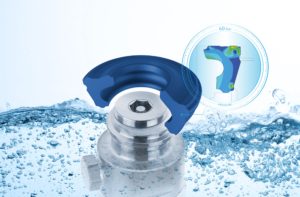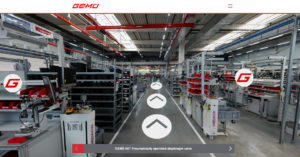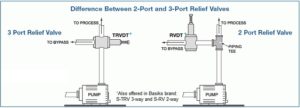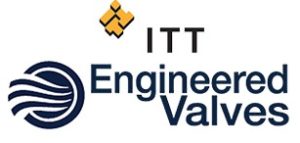KSB Group: Interim Report on the First Quarter of 2010
After the sharp downturn in 2009, the global economic situation stabilised somewhat during the first three months of 2010. However, while economic growth recovered strongly in some emerging countries, it remained unsatisfactory in the industrialised countries.
In Europe in particular, many investors showed continuing reluctance after the financial and economic crisis to build new plants and facilities and to order the necessary machinery and equipment. Accordingly, demand for pumps, valves and systems remained cautious in the first quarter of 2010.
Order intake and sales revenue development
Order intake during the first quarter of 2010 fell by 5.4 percent to € 484.8 million compared with the same period last year. This decline is solely attributable to market developments in Europe, where the level of new orders received by our companies was more than 10 percent lower. As well as a continued weak business with part of our standard pump and valve portfolio, reduced willingness to invest in projects impacted on order intake. KSB AG in particular felt the fallout from the economic crisis.
In contrast, order intake in the Regions Middle East / Africa, Asia / Pacific and Americas rose significantly again. In these three Regions, order intake for submersible pumps, used in water and waste water plants, as well as for valves, increased strongly. In Asia, pump orders for three large power plant projects also had a positive impact on order figures.
The order intake figures reflect the first-time consolidation of five smaller companies in Germany, Italy, Canada, Norway and Russia. These recorded an overall order intake in the first quarter of € 8.3 million or 1.7 percent of the total volume.
Consolidated sales revenue between January and March 2010, at € 439.4 million, was 6.7 percent lower compared with the same period last year. Sales declines were recorded in the pump business, while sales revenue figures for valves and services again trended upwards. Given that pumps make up a high proportion of business of around 70 percent, these positive trends were, however, not enough to bring total business back to growth.
The newly consolidated companies generated sales revenue of € 6.1 million overall, or 1.4 percent of consolidated sales revenue.
Change in number of employees
Due to the ongoing difficult market situation, new hires mainly replaced departing employees, and in some cases, positions were temporarily left vacant. Nevertheless, the number of employees employed by the Group was up by 84 on the figure at the end of March 2009 and now stands at 14,506. This is due to the first-time consolidation of the aforementioned companies with 269 employees.
Results of operations and financial position
Consolidated earnings before taxes (EBT) in the first quarter were similar to the level of the comparable prior-year period, with the lower sales revenue figure even leading to a slightly improved return on sales. This positive development is attributable to a more favourable sales revenue composition with comparatively lower material costs.
The Group s financial position once again improved slightly compared with the end of 2009. This is primarily due to a notable reduction in inventories and receivables.
Outlook
For the current financial year, KSB expects Group order intake and sales revenue to range at prior-year levels, but at the same time do not exclude the possibility of a slight decline. If the economic situation recovers more strongly than expected, our standard pump and valve business may also rapidly improve. In contrast, increasing pressure on prices due to growing overcapacity and the postponement of investment projects by customers could lead to lower volumes in the project business with its emphasis on engineered products built to order. Automation products that improve the energy efficiency of pumps are experiencing positive growth, albeit at a low level.
For 2010 we expect a decline in consolidated earnings, chiefly as a result of increased pressure on prices and higher depreciation and amortisation charges. These are the result of major investments made in previous years to safeguard the future of the business.
Active cost and liquidity management will help to overcome the consequences of the financial and economic crisis as well as to deal with risks resulting from uncertainties in future economic trends. We plan to implement strategic measures in sales and technology in 2010 aimed at achieving sustainable, profitable growth.
Source: KSB SE & Co. KGaA







